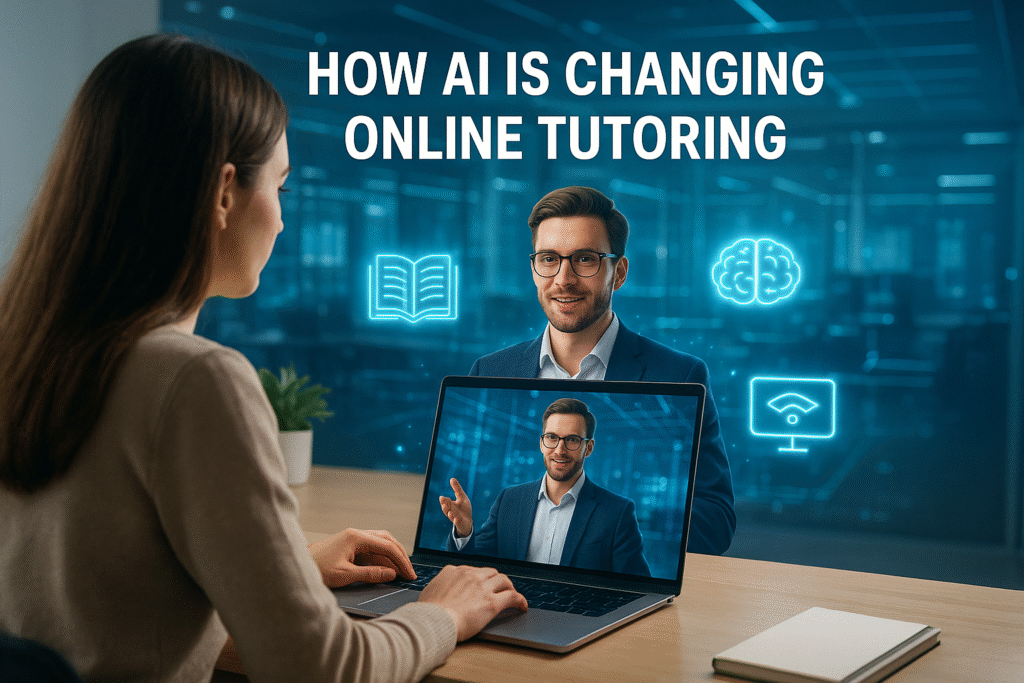Introduction
The world of education has changed dramatically — and Artificial Intelligence (AI) is leading the revolution.
Online tutoring, once limited to video calls and digital whiteboards, has now evolved into personalized, data-driven, and interactive learning experiences.
In 2025, AI is not just helping teachers teach better — it’s helping students learn smarter.
Let’s explore how AI is transforming online tutoring, the tools driving this change, and what it means for educators and learners worldwide.
🧠 1. Personalized Learning for Every Student
One of the biggest challenges in traditional teaching is that every student learns differently.
AI solves this by adapting lessons to each student’s pace, strengths, and weaknesses.
✅ How It Works:
- AI tools analyze test results, responses, and study behavior.
- Then they adjust the difficulty level, topic order, and teaching method accordingly.
- Students get customized quizzes, feedback, and recommendations.
💡 Example:
Platforms like Socratic by Google and Khanmigo (by Khan Academy) use AI to guide students step-by-step through problems — almost like a personal tutor available 24/7.
🤖 2. Smart Tutoring Assistants
AI-powered tutoring assistants are changing how teachers support their students.
✅ What They Do:
- Answer student questions instantly.
- Provide real-time hints and feedback.
- Help teachers manage grading and content creation.
- Even track student progress and suggest interventions.
💡 Example:
ChatGPT-based assistants can explain complex topics in simpler terms, generate practice questions, and even help with essay writing guidance.
📈 3. Data-Driven Insights for Teachers
AI doesn’t replace teachers — it empowers them with better insights.
✅ Benefits for Educators:
- Identify struggling students early.
- See which lessons or topics need improvement.
- Measure learning engagement through analytics dashboards.
- Automate attendance, grading, and reporting.
💡 Example:
Google Classroom + AI plugins help teachers monitor which students interact the most and who might need extra help.
🗣️ 4. AI-Powered Language Learning
Language tutoring has seen one of the biggest boosts from AI.
Instead of memorizing grammar, students can now speak, listen, and get real-time feedback using AI voice recognition and NLP (Natural Language Processing).
✅ Top Tools:
- Duolingo Max (GPT-4 powered): AI chat for speaking practice.
- Elsa Speak: Voice-based AI coach that corrects pronunciation.
- Speak.ai: Simulates natural conversation to improve fluency.
💡 AI makes learning a new language feel like chatting with a native speaker.
🎯 5. Automated Content Creation
Teachers spend hours preparing lessons, quizzes, and activities — AI now does most of that heavy lifting.
✅ How It Helps:
- Generates custom worksheets and lesson plans.
- Creates interactive quizzes and tests based on curriculum.
- Produces personalized feedback on student essays.
💡 Example:
Tools like ChatGPT, Jasper, and Notion AI can generate complete lesson plans in minutes — saving tutors tons of time.
🌐 6. Virtual Classrooms with AI Features
The modern online classroom is now powered by AI — creating immersive and interactive environments.
✅ AI Classroom Features:
- Smart whiteboards that recognize handwriting and equations.
- Speech-to-text transcription for accessibility.
- AI-based breakout rooms for group learning.
- Automatic recording and summarizing of lessons.
💡 Example:
Platforms like Vedamo, Engageli, and Zoom AI Companion are bringing intelligent automation into every live class.
💬 7. Chatbots for 24/7 Student Support
Students often need help outside of tutoring hours — and that’s where AI chatbots step in.
✅ Benefits:
- Provide instant answers to FAQs or doubts.
- Offer learning resources or video links.
- Collect student feedback automatically.
💡 Example:
AI bots in LMS platforms like Moodle or Canvas can respond instantly to student questions — improving engagement and reducing dropouts.
📚 8. Assessment & Grading Automation
Grading tests and assignments can take hours — AI tools now handle it in seconds.
✅ What It Can Grade:
- Multiple-choice tests (instantly).
- Written essays (with feedback).
- Coding assignments (using AI compilers).
💡 Example:
Gradescope uses AI to evaluate handwritten answers and categorize common errors — saving teachers massive time.
🎮 9. Gamified Learning With AI
AI-powered gamification makes studying addictive — in a good way!
✅ Features:
- Personalized challenges based on student progress.
- Reward systems like badges, levels, and leaderboards.
- Adaptive quizzes that get harder as you improve.
💡 Example:
Quizizz AI and Kahoot! AI turn study sessions into interactive games — making learning fun and motivating.
🌍 10. Accessibility & Inclusivity
AI makes online tutoring more inclusive — helping students with disabilities learn without barriers.
✅ AI Accessibility Tools:
- Speech-to-text for hearing-impaired learners.
- Text-to-speech for visually impaired students.
- Real-time translation for multilingual classrooms.
💡 Example:
Microsoft’s Immersive Reader helps dyslexic students learn effectively with AI-powered reading support.
🧩 11. Predictive Learning Analytics
Imagine knowing which student might struggle before they even fail a test — that’s what AI predictive analytics can do.
✅ How It Works:
- Tracks attendance, participation, and grades.
- Predicts student performance using data models.
- Sends alerts to teachers and parents when intervention is needed.
💡 Example:
IBM Watson Education helps schools identify at-risk students early and provide personalized learning plans.
🧠 12. The Human + AI Partnership
AI is not replacing tutors — it’s enhancing them.
The most successful educators in 2025 will be those who combine empathy with technology.
✅ Human Touch Still Matters:
- Emotional support and motivation can’t be automated.
- Creativity and storytelling still engage students best.
- Teachers act as mentors while AI handles the technical tasks.
💡 The future of education is not AI vs. human — it’s AI + human.
⚙️ 13. Top AI Tools for Online Tutors in 2025
| Tool | Purpose | Best For |
|---|---|---|
| ChatGPT / Claude | Lesson creation, explanations | Tutors of all subjects |
| Khanmigo | Interactive tutoring | K–12 and students |
| Gradescope | AI grading | Schools, universities |
| Tidio / Intercom AI | Chat support | Online tutoring platforms |
| Synthesia / Pictory | Video lesson creation | Course creators |
| Quizizz AI / Kahoot! AI | Gamified quizzes | Fun learning |
| Otter.ai / Zoom AI | Lesson transcripts | Live classes |
📈 14. Challenges & Limitations
While AI is powerful, it’s not perfect.
⚠️ Challenges:
- Overreliance may reduce human interaction.
- Data privacy concerns in student analytics.
- AI-generated content can lack emotional depth.
- Not all regions have access to advanced AI tools.
💡 Educators should use AI as a partner, not a replacement.
🎯 15. The Future of AI in Online Tutoring
By 2030, online tutoring could be fully adaptive and immersive, using AI + VR + AR to simulate real classrooms.
Imagine:
- Students learning science inside virtual labs.
- Tutors using AI holograms for global classes.
- Learning that feels like a personalized adventure, not homework.
💡 AI isn’t the future of tutoring — it’s already here.
🧾 Conclusion
AI is revolutionizing online tutoring — making education more personalized, efficient, and accessible than ever before.
From lesson creation to grading, support, and analytics — AI is the ultimate teaching assistant every educator needs.
“AI won’t replace teachers. But teachers who use AI will replace those who don’t.”
So, whether you’re a teacher, tutor, or course creator — now’s the time to embrace AI, not fear it.
Because the classrooms of tomorrow are being built today — and they’re powered by Artificial Intelligence. 🤖🎓


